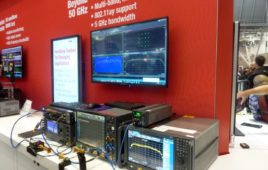After suburban lifestyles being the norm for generations of Americans, the pendulum is beginning to swing back towards urbanism: the United Nations says 54 percent of the world’s population lives in urban areas today, a proportion that is expected to increase to 66 percent by 2050. Meanwhile, the proliferation of connected devices continues. The World Economic Forum predicts that by 2023 there will be a staggering 9.1 billion mobile subscriptions.
With such rapid population growth, cities must be ready to accommodate and nurture a booming urban workforce and businesses must be equipped to take advantage of the new skills and platforms that exist in today’s technology driven marketplace.
Ongoing innovations and continued convergence of platforms provide cities with ideal solutions to meet this demand. Affordability and scalability of services like the Internet of Things and the upcoming expansion of mobile infrastructure in anticipation of 5G networks are just two examples.
Networks of connected devices can solve societal problems associated with explosive urbanisation like traffic control, healthcare and energy management. Telehealth applications can bring healthcare to patients’ doorstep. Now, people living away from cities don’t necessarily have to travel hundreds of miles to see a doctor or nurse to get treated or information about their health. As patients can capture data about their own health via wearable devices and doctors can communicate with patients through a combination of an online portal and networked devices. This could change the nature of the doctor-patient relationship and the way healthcare is delivered.
Another example can be seen in law enforcement and personal safety. Governments now have technology at their fingertips to use predictive crime analytics and video management systems to target crime hot spots. This gives the authorities more resources to predict and prevent crimes, ultimately driving down the crime rate and improve the overall safety of their cities. Other Internet of Things enabled safety devices like smoke detectors and home alarm systems can also enhance the precision of monitoring in real-time, and enable a more rapid response in the event of an emergency.
A New Era of Connectivity
While the Internet of Things offers easier access to data and connectivity, the enhanced speed and connectivity of 5G will drive fundamental change and, in fact, will create entirely new approaches to businesses and infrastructure models. Artificial Intelligence (AI) will be used to analyze the huge amount of data generated by driverless cars and the urban infrastructure that supports them, including smart road signs and traffic lights. Thanks to 5G, the insights gained could be used in new ways, such as reducing the amount of breakdowns and providing more detailed real-time traffic reports and air quality information.
Meanwhile, 5G networks will allow factories to cut cables to their machines and put more intelligence into the cloud. This will lead to cheaper robots, quicker change times and much more flexible production. And the high speed of 5G will give machine operators real-time insights on the overall status of the project, and provide the opportunity to explore machine-learning and predictive maintenance, which reduce expensive downtime.
We are at the beginning of a new era of global connectivity, with speeds we’ve never seen before.
The adoption of 5G is going to be critical to fully realize the vision of a mobile first, connected work force that will have optimal bandwidth speeds at the mobile edge to support improved collaboration functionality such as AR/ VR. In addition, we expect an explosion of more advanced IOT use cases that will consume greater bandwidth – particularly as we look to use cases like autonomous vehicles, remote surveillance and increasing interactions across different IOT endpoints leveraging artificial intelligence and machine-learning. All of these higher bandwidth use cases require cities to embrace and invest in a faster, more responsive “network on demand” in order to realize their full potential.


